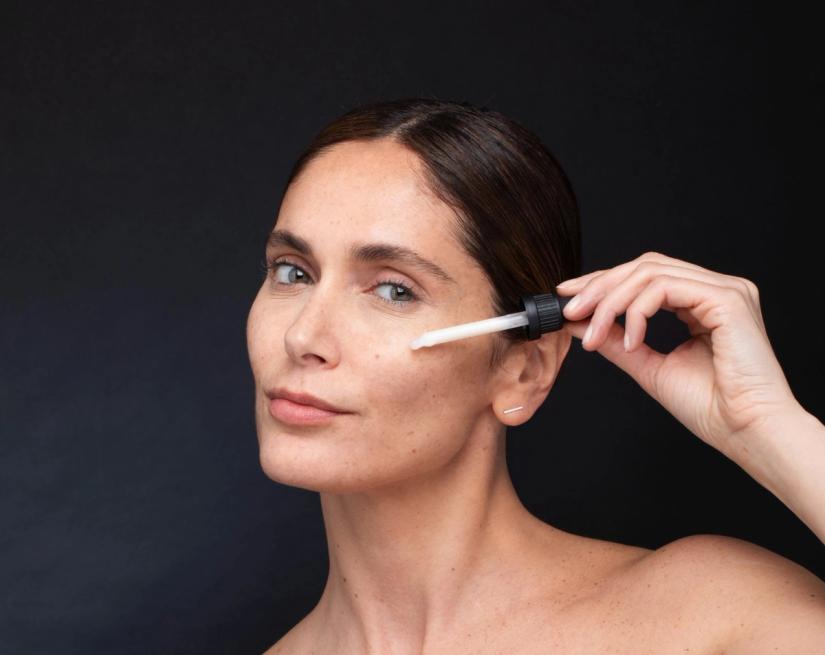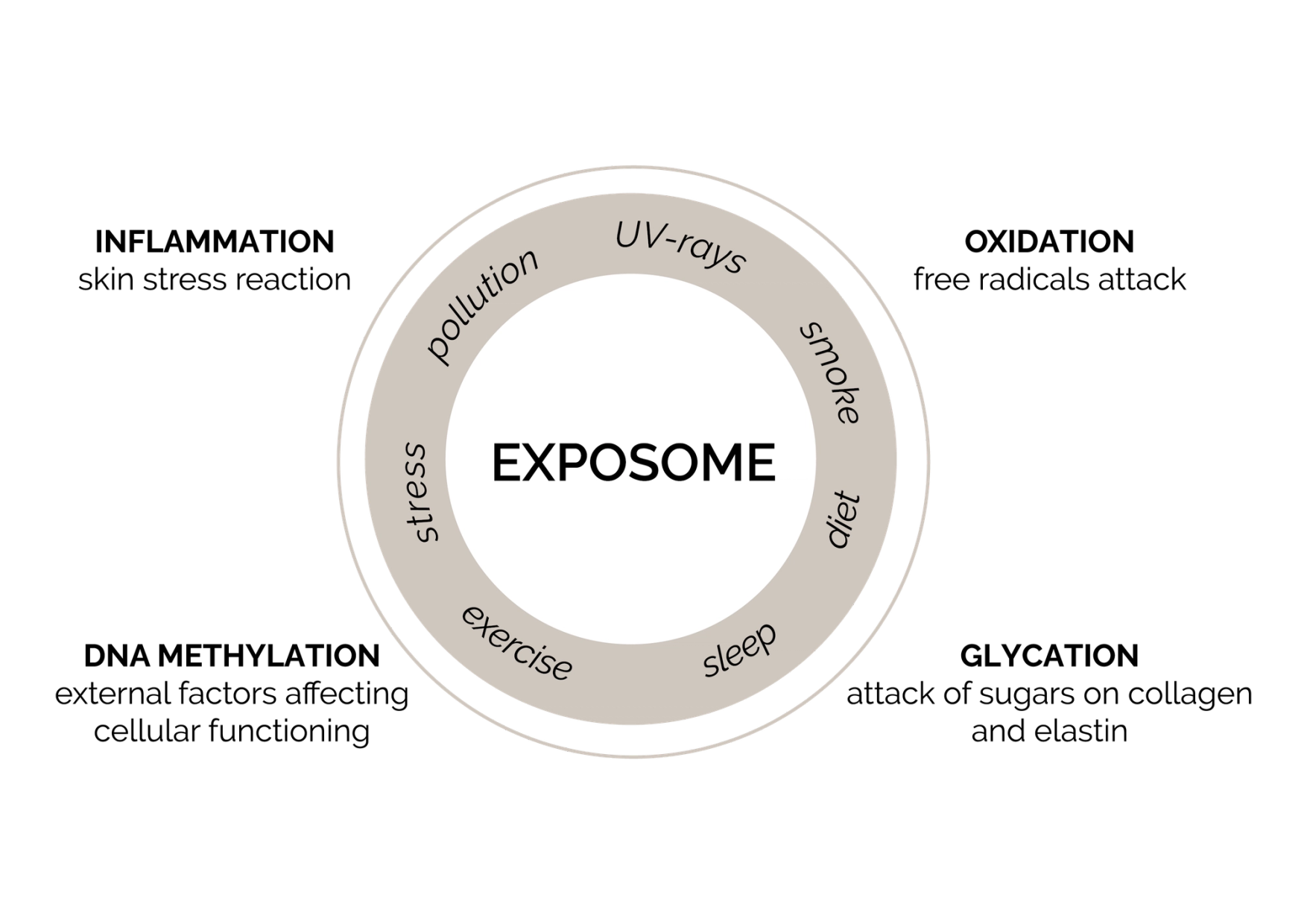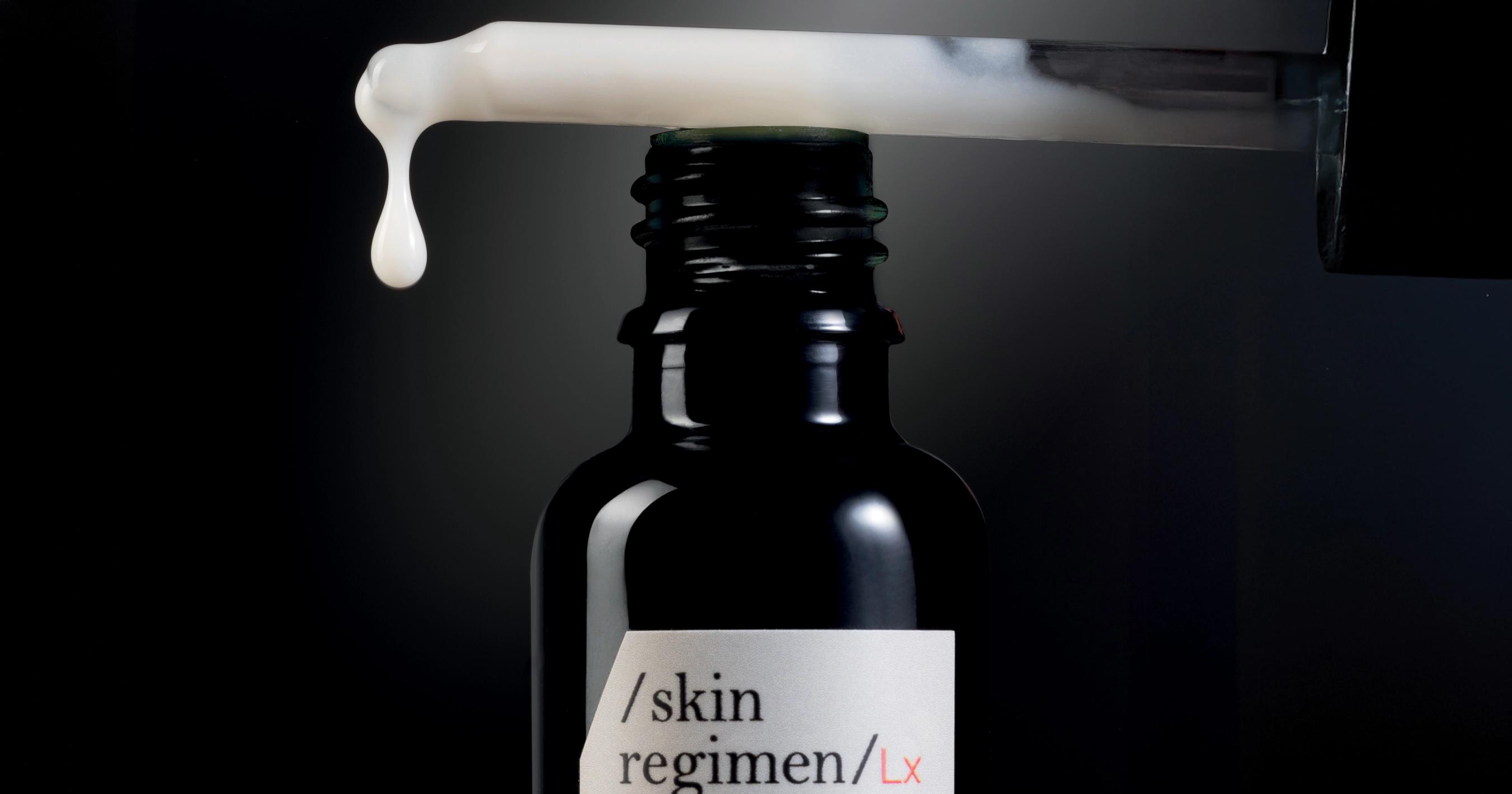Skin Regimen Lx Ha4 Jelly Serum
Hydra-plumping serum
skin care
Eve Mérinville | Corporate RD Excellence & SC RD and Innovation Director
10 min read

Collagen plays a huge role in making your skin radiant, healthy, and firm. Find out how this protein acts as a foundation for your skin health by increasing its elasticity and resilience.
Collagen supports the skin tissue, ensuring its elasticity, firmness, and resilience, like a flexible but tenacious network that works silently beneath the surface. Structurally, collagen is a proteincomposed of three chains of amino acids intertwined to form a triple helix. These helices aggregate together to form fibrils, which in turn organise themselves into collagen fibres: true microscopic pillars of our skin. Intertwined in a three-dimensional web, they are located under the epidermis, the outermost layer, like a mattress, capable of supporting the tissue and keeping it compact but flexible.
And that's not all: there is not just one type of collagen! There are at least 28 types in our body, each with a specific function. Not all of them actively participate in maintaining the beauty of our skin; the real protagonists of the skin are type I collagen, the most abundant, and type III collagen, present in smaller quantities but still essential. All other types operate in other areas of our body with equally crucial roles. For example, type II collagen is essential for joint cartilage, while type VI collagen contributes to the proper functioning of muscle tissue. In our body, collagen is like a silent and tireless architect, working behind the scenes to ensure stability, form, and functionality.
Just like a superhero working behind the scenes, collagen is your skin's greatest silent ally. When collagen is present in adequate quantities, the skin appears radiant, smooth, and vital, free of marked wrinkles or fine lines. Unfortunately, however, from the age of 25 onwards, our body begins to slow down its collagen production. During early adulthood, endogenous collagen synthesis decreases, while metalloproteinases, endogenous enzymes that break down collagen, continue their activity.
The result of this slow imbalance becomes increasingly evident year after year as the skin loses tone, the first wrinkles appear, and the skin structure begins to sag. These are the visible signs of a weakening internal architecture. And it is not only age that undermines this structure.
There is a whole world of external factors that affect our skin, known as the exposome. These include:
Understanding the role of collagen in skin health means looking beyond the mirror and learning to protect what lies beneath: the biological scaffolding on which lasting beauty is built.

Collagen comes from simple but valuable building blocks: amino acids that act as small “bricks” essential for building proteins that keep the skin toned, firm, and resistant. When the supply of these elements is scarce, collagen production slows down, and our skin suffers.
However, the good news is that there are several ways to support the skin tissue to produce more collagen naturally and strategically.
*Park, K. (2015). The role of micronutrients in skin health and function. Biomolecules & Therapeutics, 23(3), 207–217.

As we age, our ability to produce collagen slows down. To make matters worse, the exposome comes into play, i.e. the combination of external factors such as stress, pollution, smoking, lack of sleep, and poor diet, accelerating collagen’s degradation. All these factors lead to a single result: duller, less toned skin with visible signs of aging.
To counteract these effects, Comfort Zone has developed a complete solution: the new Longevity Collagen+ Serum by Skin Regimen Lx, a redensifying serum with an immediate filler effect.
The secret of this innovative treatment lies in the synergy between two highly effective complexes:
- Collagen Pro Complex
The former aims to protect the skin from daily attacks by the exposome, thanks to a pool of specific active ingredients that act on the mechanisms that accelerate aging and are linked to the exposome. These includemyrtle berry extract, obtained from plants grown according to the principles ofregenerative organic agriculture,spinach extract, and Tephrosia purpurea extract, alongside carnosine.
The serum's action is completed by the innovative Collagen Pro Complex, formulated to actively stimulate the production of new collagen. It contains low molecular weight hydrolysed collagen and lemon balm extract, rich in rosmarinic acid and obtained from plants grown at EROC, the European Regenerative Organic Centre in Parma. Finally, the formula is enriched with a biomimetic peptide structure and acacia collagen, a plant-based alternative to animal collagen.
This rich pool of functional ingredients in Collagen Pro Complex gives this innovative complex the ability to boost type I and type III collagen in our skin by 40.6%*, and its synergy with Longevity Complex™ is what defines the ability of Skin Regimen Lx's new Longevity Collagen+ Serum to have an immediate redensifying and filling effect**.
*Independent laboratory, instrumental and clinical evaluation, 20 women, after 1 application
**In vitro testing on ingredients
In recent years, there has been increasing talk of “collagen banking,” i.e. the idea of starting to preserve and stimulate collagen levels in the skin at a young age in order to delay the signs of aging as much as possible. This approach aims to stimulate and preserve collagen right from the start by building up a sort of reserve that helps keep the skin toned and youthful for longer. But beware! Collagen cannot be accumulated in the skin as a reserve, nor can it be stored simply by applying cosmetic products, however advanced they may be.
Even when using formulas containing hydrolysed collagen or latest-generation active ingredients, the effect is never to store collagen in the skin. These ingredients stimulate the natural mechanisms that promote endogenous production. In addition, our body regulates collagen levels within the skin tissue very precisely through the action of metalloproteinases, enzymes that break down excess collagen to maintain homeostasis.
This is where Comfort Zone's latest innovative solution comes in: the new Longevity Collagen+ Serum from /skin regimen/Lx. Thanks to the synergy between Longevity Complex™ and Collagen Pro Complex, this serum works in harmony with the skin, supporting its natural processes and protecting existing collagen from damage caused by the exposome. A concrete, realistic, and scientifically based way to support the skin over time, this product allows the skin to feel firmer, more elastic, and more radiant.

Hydra-plumping serum
redensifying filler effect serum
Brightening serum
Anti-pollution face cleanser
Illuminating clay mask